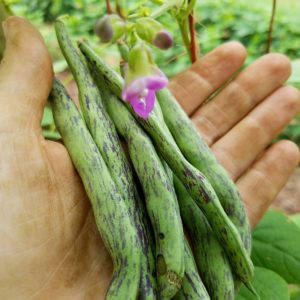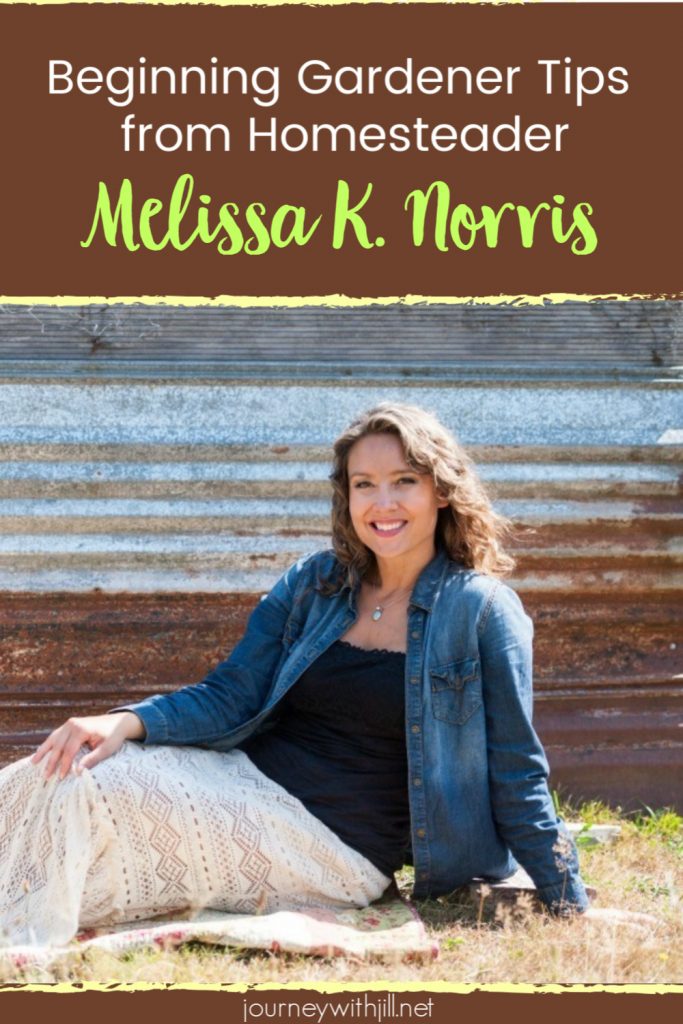Best Gardening Tips from Real-Life Homesteader Melissa K. Norris
I remember my first year as a gardener, desperately searching for gardening resources and podcasts. Sadly I didn’t find many that helped me at the most basic level I needed at the time. But there was one I listened to faithfully, and that was the Pioneering Today Podcast by Melissa K. Norris.
Melissa and I initially connected through a faith-based site, but I quickly learned that we had more than our faith in common. An experienced gardener, homesteader, and expert canner, Melissa taught me so much from her through her podcast and her blog.
Several years later, I not only consider her a valuable resource but also a friend, and I look forward to the day we finally get to meet in person. But until then, I’m so grateful that she joined me on The Beginner’s Garden Podcast. This episode is full of great tips and ideas for gardeners of all skill levels and you’ll want to make a point to listen from beginning until the end. Make sure to check out my other interviews with Melissa about her book The Family Garden Plan and getting started with home canning. You can click below to listen or read on for the highlights.
How to Start a Garden in a Small Space
You would think that a homesteader wouldn’t know much about gardening in a small space, but the opposite is true in many cases. Since a homesteader’s chores go beyond the home garden, it’s imperative for the garden to stay manageable. Here are Melissa’s tips for a gardener with space of any size to get started.
First, start small. If you become overwhelmed, you’re less likely to stick with it. By starting small, you’ll become empowered and you can grow more each year as you get more experience.
Melissa suggests to get started growing 2-3 things in the first year.
You can grow a lot with container plants — more than you realize. Even pole beans can grow in containers!
Which Plants to Start in Your Garden First
If Melissa suggests to start with 2-3 plants in your first year, which would she choose if she only could choose 3 crops to grow?
First, she would grow beans. Why beans? As a dual crop, she not only gets the dry shelled white bean but also the fresh snap green beans. She can also prepare them fresh and preserve them.
Second, she would choose tomatoes, again because of its multipurpose use. Not can tomatoes be eaten fresh, but they can be used for sauce, soup, stewed tomatoes, salsas, ketchup, barbecue sauce, and more. Here are some ideas for making the most use of tomatoes.
Her third choice was a tough one, but she decided on apples because she enjoys applesauce, apple pie, and apple butter. Plus, they store well and can be used for a long period of time.
Growing Green Beans
Melissa’s family has been growing and saving seeds from green beans for generations. Her bean of choice is the Tar Heel pole beans, which her ancestors brought from North Carolina when they migrated to the Pacific Northwest in 1940.
Will pole beans produce in the heat of the summer?
Though Melissa’s Pacific Northwest summers are usually a bit more mild than mine here in the South, sometimes her beans will delay their production until the hot weather passes. In my area, since I can plant mine earlier due to an earlier last frost date, my beans will give a short burst of production, stop during the hottest part of the summer, and give their best harvest later in the summer to the early fall.

Seed Saving and Cross-Pollination
Melissa and I both save seeds from our green beans. As the bean seeds begin to get acclimated to a climate, one may notice the production becoming less sensitive to heat and more tolerant of local gardening conditions.
The key to seed saving green beans is to make sure, first, you start with an open-pollinated variety. Then, it’s best to separate different varieties as far as possible, or at least don’t save seed from the rows that are planted next to one another.
Keeping Pests Under Control on the Homestead
With a larger garden, is pest control a bigger problem? Especially for an organic gardener? Not necessarily.
Melissa and her family have never used pesticides, partly because as a child her family just didn’t spend money on them. But as she started a journey to a more natural life overall, it wasn’t a hard leap to avoid chemical pest control altogether.
Part of this she attributes to the natural diversity of a home garden. Companion planting helps confuse pests. Maintaining a healthy soil strengthens the plants’ defenses against attack.
Her biggest garden pest in her wet climate is slugs. For slugs, she’ll use a barrier like a floating row cover to protect her plants. She also uses the organic control, diatomaceous earth
, when necessary.
Is Gardening Worth it?
The biggest misconception Melissa sees new gardener make is the assumption that it takes too much time. It can, of course, but her life has shown that it’s totally possible to grow a garden while holding down day jobs. For even more tips on how to make gardening work in even the most busiest of lifestyles, check out the further resources Melissa provides via her books, blog, podcast, and the Pioneering Today Academy below.
Resources:
Melissa’s Book: The Made from Scratch Life
Melissa’s Second Book: Hand Made
Personally, I have enjoyed both of Melissa’s books and keep them on standby for recipes and tips in my garden and home. I highly recommend all of her resources!
Do you get overwhelmed with garden planning?

Subscribe here for my best tips to plan your garden in just 7 days -- all for FREE.
Plus, I'll send you my "In the Garden E-mail" on Fridays, periodic updates on garden resources relevant to you, and you'll receive access to my entire bank of free garden downloads!
You are also agreeing to our privacy policy.

